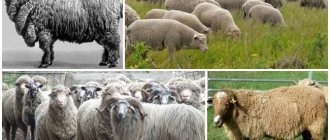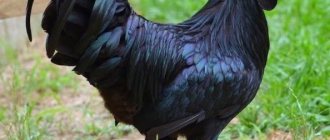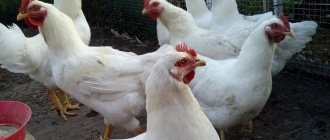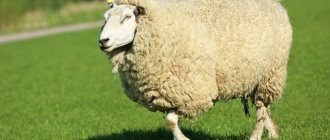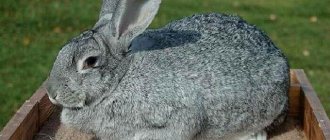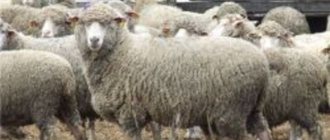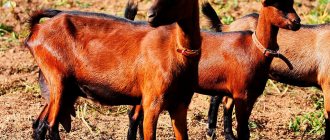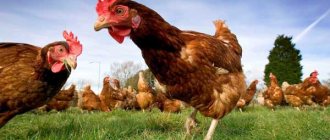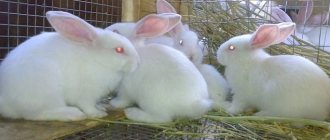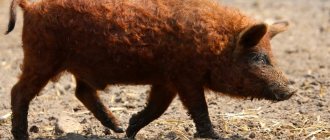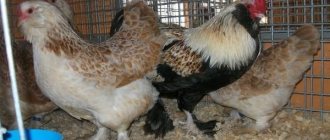Livestock » Sheep
0
3585
Article rating
Kira Stoletova
Sheep farming is developed all over the world; in many countries this type of livestock farming occupies a leading place in the industry, and therefore the variety of breeds is amazing. One of them, the Suffolk sheep breed, comes from England. It is the result of crossing the Norfolk Horned and Southdown varieties.
Characteristics of Suffolk sheep
This breed was registered in 1810. The resulting individuals differed from their ancestors in all respects, taking the best from them. The work of breeders has brought the variety to almost perfection. After this, Suffolks quickly earned recognition and rapidly spread throughout Europe, America, Australia, and won a leading position in farming.
History of appearance
The breeding of these animals began in the distant 18th century in England in the county of Suffolk. Since 1810, the breed has been officially recognized in its homeland. By the end of the 19th century, her tribal map was developed. Russia and other countries gained the opportunity to purchase these sheep only at the beginning of the twentieth century.
Suffolks were bred by crossing the two strongest species of British sheep at that time, from which they inherited qualities significant for sheep breeding:
- Horned black-faced Norfolk. It is famous for its endurance in adverse conditions, rapid adaptation to climate and environmental changes. It easily leads a normal lifestyle even in the cold or constant winds thanks to its muscular body and good immunity.
- Southdown. A breed known for its abundance of wool and delicious soft meat.
Important! Thanks to the qualities acquired from their ancestors, as well as the careful selection of individuals for crossing, the Suffolk breed has become one of the most valuable in the whole world.
Description of Suffolk sheep
Sheep farming is developed all over the world; in many countries this type of livestock farming occupies a leading place in the industry, and therefore the variety of breeds is amazing. One of them, the Suffolk sheep breed, comes from England. It is the result of crossing the Norfolk Horned and Southdown varieties.
Characteristics of Suffolk sheep
This breed was registered in 1810. The resulting individuals differed from their ancestors in all respects, taking the best from them. The work of breeders has brought the variety to almost perfection. After this, Suffolks quickly earned recognition and rapidly spread throughout Europe, America, Australia, and won a leading position in farming.
Characteristics and appearance of the breed
Externally, the Suffolk breed stands out in color from the rest: the head and legs of the animal are rich black, and the body is bronze yellow or white. The legs are massive, with a straight structure, without fleece, so Suffolk sheep survive equally well in both humid climates and severe droughts, and the birth rate does not change from this. The tail is small in size, without fat deposits, the back is straightened, the rump is compacted. The head is medium size, there are no horns.
Suffolks are tall and have good muscles:
- An adult ram reaches 80 cm in length and weighs from 100 to 150 kg.
- Females are no higher than 75 cm, weigh 80-140 kg.
- Lambs are born weighing 4-7 kg, twins - 4-5 kg, and triplets - from 3 to 4 kg, and after 3 months, with a balanced, plentiful diet, lambs reach a weight of 40 kg.
See also
Types and drawings of sheep pens, how to make them yourself at homeRead
The rapid growth and weight gain of lambs is explained by the increased fat content of mother's milk. At slaughter, the meat yield is not less than 50% of the weight. Suffolks are characterized by good hereditary memory and fertility. Females give birth regularly every year, thanks to which intrabreed characteristics are preserved.
The most valuable asset among consumers is considered to be tasty, nutritious meat, which:
- easily absorbed by the body, does not cause heaviness;
- does not have a specific odor characteristic of meat of other breeds;
- has a delicate, soft structure, not typical for lamb;
- saturated with fluorine, lecithin, and other beneficial substances.
The semi-fine, crimped Suffolk fleece is known throughout the world. Sheep are sheared twice a year. An adult animal produces 3-5 kg of wool, clean - at least 60%. Fiber with a diameter of 30-34 microns, length 7-10 cm.
Expert opinion
Zarechny Maxim Valerievich
Agronomist with 12 years of experience. Our best country expert.
Ask a Question
Important! Suffolk wool is soft, thin, and retains heat well. Considered the most durable in the world.
Description of Suffolk sheep
The semi-fine-fleece, meat-and-wool, early-ripening breed of Suffolk sheep originated in the second half of the eighteenth century in England.
The first mention of sheep called Suffolk dates back to 1797, already in 1810 they were recognized as an independent breed, but only in 1886 the first stud book of Suffolk sheep was published, in which 46 pedigree sheep herds were registered, numbering from - 50 to - 1100 bright. All Suffolk herds were located in eastern England. Around the same time, Suffolk sheep began to spread quite quickly across the European continent and then, unnoticed, they ended up in North and South America, Australia, and even Russia. As the ancestors of the Suffolk sheep, there were breeds such as the Norfolk Horned, which were used as the maternal line, and the Southdown, which were respectively used as the paternal line. The result of the crossing exceeded expectations; the sheep of the new breed surpassed the parent breeds in their characteristics. From the Southdown rams (or Southdown, this breed was also known as the Southdown Norfolk, or Black Muzzles), Suffolks inherited high-quality meat and wool characteristics. From the Horned Norfolk sheep, which were originally bred in areas with harsh conditions, where strong winds, cold days and rather poor pastures were common, which encouraged them to constantly move long distances in search of food, the Suffolks inherited a superbly developed muscular body. The selection of Suffolk sheep was carried out through careful selection of crossbred animals for the most valuable breed qualities. At the beginning they became known as excellent producers of lamb meat, but over time the breed developed according to the requirements that consumers set for it. In the modern world, Suffolk sheep can be found anywhere in the world where sheep breeding is developed. Suffolks occupy a leading position in the US and UK sheep breeding, where they are recognized as the best terminal rams when crossed with sheep of other breeds in order to obtain the highest quality lamb meat. The popularity of using Suffolk rams in interbreeding rather than purebred is due to the fact that Suffolk rams, having quite good fertility, per 100 lambs of the Suffolk breed, an average of about 130-190 lambs are born, they, unfortunately, are able to bear offspring only once a year, and sheep of polyestrous breeds covered with Suffolk rams, such as our famous Romanovskaya, are able to bear many lambs with improved meat characteristics and do this up to twice during the year.
Suffolk sheep are a fairly large meat-wool, hornless breed of sheep with good meat shape. Their head and legs are covered with covering black hair. The ears are long, thin and slightly drooping. The tail is long and skinny. The fleece is white or various shades of golden yellow, crossbred wool, semi-fine. The fineness of the wool is 25.5-33 microns, the length of the wool fibers is 5-10 cm. The shearing of wool for Suffolk sheep can reach 4.5-5 kg, for sheep about 3.1-3.6 kg. The yield of pure wool is at least 60%.
Height at the withers for Suffolk rams is about 68-80 cm, for sheep, respectively, 61-74 cm. The live weight of adult rams is on average 105-140 kg, sheep in the region - 70-100 kg, lambs at four months are usually 37 -44 kg. The fertility of Suffolk sheep is quite acceptable - 130-190%, twins and often triplets are often born. The interval between lambings is at least 360-365 days. The weight of Suffolk lambs at the birth of one lamb is about 5-7.7 kg, for twins - 4.2-5 kg, for triplets - 3.5-4 kg. Carcass weight at 3 months is 17 kg, at 4 months about 28 kg. With intensive fattening, the weight of lambs at 3 months of age can reach up to 35-40 kg. Suffolk cats reach sexual maturity at 6 months. The average daily weight gain of lambs is 280-400 grams. Under ideal conditions, Suffolk lambs are ready for sale at 9-12 weeks, with a slaughter yield of at least 50-52%.
Suffolk sheep are one of the best meat breeds in the world. It is quite early-ripening, fast-growing, has a good slaughter yield, high-quality meat and excellent carcasses. Suffolk sheep are not picky eaters and have excellent immunity, resistant to leg diseases and internal parasites associated with grazing on very wet pastures. They easily adapt to different climatic conditions, have a high birth rate, long life expectancy and easy lambing. Suffolk sheep are ideal for herding on intensive pastures.
The breed is bred in all countries of the world. Suffolk rams are widely used in the creation of crosses to increase the growth rate of lambs, large weights, and lean carcasses. Crosses aged 15-16 weeks weigh approximately 40 kg or more, with a thickness of fat in the carcass of 3 mm. Crossbreeds of Suffolk sheep with fine-fleece and semi-fine-fleece sheep breeds are distinguished by early maturation, good endurance and adaptability to stall and pasture keeping.
Video of Suffolk sheep
Advantages and disadvantages
Rams of this breed are adapted to humid, arid or temperate climates and maintain fertility well under unfavorable external conditions. Other advantages of the breed:
- resistant to parasites;
- have a high libido;
- lambs grow quickly, gain weight, and are ready for market at 5-6 months;
- produce tender, nutritious, odorless meat, rich in nutrients;
- do not require special care, nutrition, and are unpretentious.
When crossed with other breeds, they increase the birth rate and improve the taste of meat from other breeds. Disadvantages include the high cost of real Suffolk lambs, frequent multiple and large fetuses, which is complicated by difficult lambing. These animals are rarely found in Russia and are very difficult to acquire.
Characteristic differences
The main feature of these sheep is their hereditary memory. Animals are distinguished by their productivity during the reproduction process. By crossing these sheep with other species, animals with unique lamb flavors can be produced.
On average, females give birth once a year. Newborn calves weigh 6-9 kg. In many cases, the pregnancy will involve twins or triplets.
Important! High-quality feed and regular nutrition can increase the weight of a lamb up to 45 kg.
Sheep of this breed produce tasty and nutritious meat. Meat products have characteristic differences:
- No pungent odor during the cooking process;
- Juicy muscle fibers;
- Fast absorption.
Lamb contains many useful substances and microelements. These include:
- Fluorine. This component is necessary for the preventive fight against caries;
- Lecithin. This substance helps prevent the onset of diabetes and has a positive effect on the pancreas.
How to properly keep and care for animals
The Suffolk breed is unpretentious and does not require special care. Animals are kept in small fenced pastures, pens or stalls. It is not recommended to drive herds over long distances (more than 3-4 km) at high speed; this often causes limb diseases.
In summer, a common method of housing is considered to be pasture-stall housing, when animals are slowly transferred from the stall to the pasture. It is important to turn the sheep out to pasture no later than 6 am, so that they spend the hot part of the day near the pond and by this time they are already sufficiently well-fed.
Features of winter maintenance:
- Sheep and rams are kept inside a shed or shepherd, which is well insulated, especially if there are lambs.
- Despite the fact that animals independently maintain their body temperature, it is recommended to ensure that the room is warm - at least 3-5 o.
- It is better to make sheds from wood, with a clay floor.
- The room should be dry, bright, without drafts.
Important! Suffolk dogs do not require special care and can tolerate any, even extreme, conditions without discomfort.
See also
Sexual maturity of sheep and mating characteristics, insemination methodsRead
Care
The breed has become widespread due to its unpretentiousness in feeding and maintenance. Even feeding only pasture, they quickly gain weight . It is necessary to feed with grain mixtures and combined feeds with sufficient amounts of microelements, vitamins and minerals.
Important! It is not recommended to drive Suffolks to distant pastures (at a distance of 4
–
6 km) on dusty roads, at a fast pace.
Neither external nor internal parasitic infections are retained on these sheep due to their body constitution. Hoof rot is practically not common among them, but regular prevention of endoparasites is required (without such prevention, intense croupy discharge from the nose may appear). Due to their good heredity and endurance, Suffolks do not require special care, adapting to even the harshest climatic conditions , without experiencing any particular discomfort where not every type of sheep can survive.
To obtain high results, you simply need to ensure the herd keeping of unpretentious sheep on intensive pastures. It is also possible to keep them in a stall
Due to milk productivity, the presence of strong hooves and a wide pelvis, common problems associated with keeping sheep, such as poor growth, problems with lambing, and limb diseases, do not apply to this breed.
What to feed the breed
Suffolk dogs can gain weight even when feeding on pasture. They do not require special types of feed, but experts recommend feeding them with combined feeds, grain mixtures rich in microelements, minerals and vitamins. In warm weather, it is advisable to feed fresh grass in meadows and pastures. 80% of the diet, according to the rules, is grass. In cold weather, animals are given bran, hay, haylage, and straw. Experts note that Suffolks love steamed straw with root vegetables. The diet should also include chalk, bone meal, and salt. Salt licks are allowed.
Important! The volume is calculated individually for each sheep.
Wool quality
Representatives of the species have excellent wool, which is rightfully considered one of the best among the crossbred type. The fleece is a uniform, semi-thin, pleasant white or golden yellow color. Sheep are usually sheared twice a year. The wool yield looks like this:
- 3-5 kg at a time per male.
- 2-3 at a time per female.
The yield of pure wool is more than 50%. Suffolk wool is made into a variety of products and is renowned around the world for its durability. It is in demand in Canada, Australia, USA, Europe, England. These countries buy wool, trade it and produce woolen goods.
Reproduction
Suffolks are productive, and when crossed with other breeds they produce crosses with improved meat qualities. Intrabreed characteristics remain unchanged. Females give birth every year. For mating, the strongest, well-fed rams, as well as healthy sexually mature sheep, are selected. A six-month-old sheep is considered sexually mature. Mating occurs in August-October. Pregnancy lasts 5 months.
Fertilization occurs naturally: males are released to females for insemination during the day, and separated at night, or the rams remain constantly nearby so that it can happen at any time. During cervical insemination, the seminal fluid of a sheep is injected into the uterine cavity using a special syringe-catheter.
Breeding area
Now the British are breeding the breed in Suffolk, Cambridge, and Essex. Sheep are loved by farmers around the world; they are bred by residents of Europe, South and North America, and New Zealand. The breed was repeatedly imported and used for crossing with other breeds in the CIS countries. There is increased activity in breeding the species by Russian farmers, but so far there are few sheep of this breed.
Farmers who decide to start sheep farming are definitely recommended to breed the Suffolk breed. For the third century now, this breed has been considered a leader in terms of qualities important for sheep breeding: it produces high-quality meat, a lot of wool, is able to retain hereditary characteristics, is prolific, and is easy to care for.
Why Suffolk lamb is highly prized
The meat produced by animals of this species has received recognition throughout the world. This happens for the following reasons:
- the meat does not have a pronounced specific smell;
- juicy and delicate taste of the meat product;
- meat is easily digestible;
- meat is rich in nutrients.
The meat product produced by Suffolk sheep contains a lot of fluoride, which is very beneficial for teeth and helps prevent caries. It also has very little cholesterol, and lecithin helps prevent diabetes. Lecithin also activates the pancreas, improves cholesterol metabolism and has anti-sclerotic properties.
